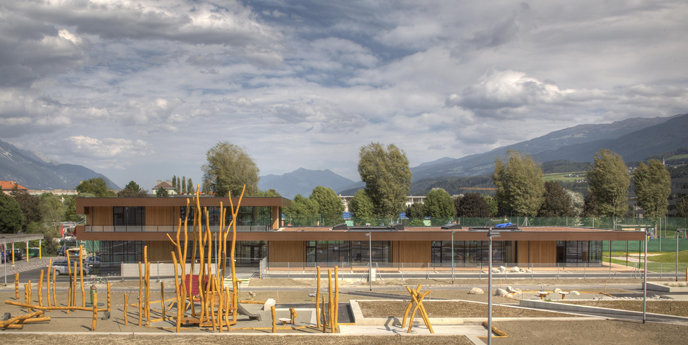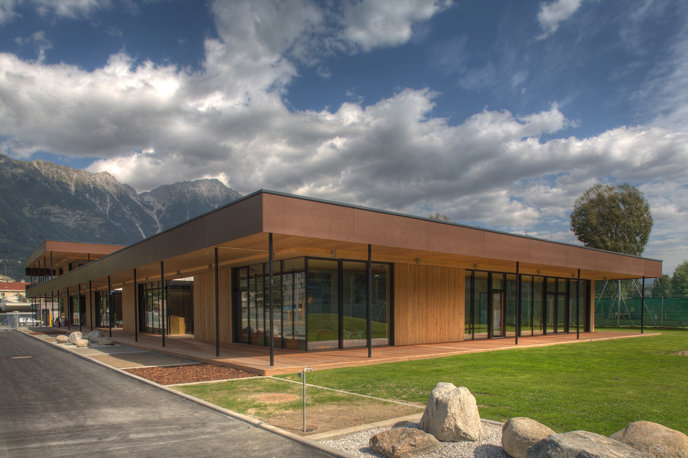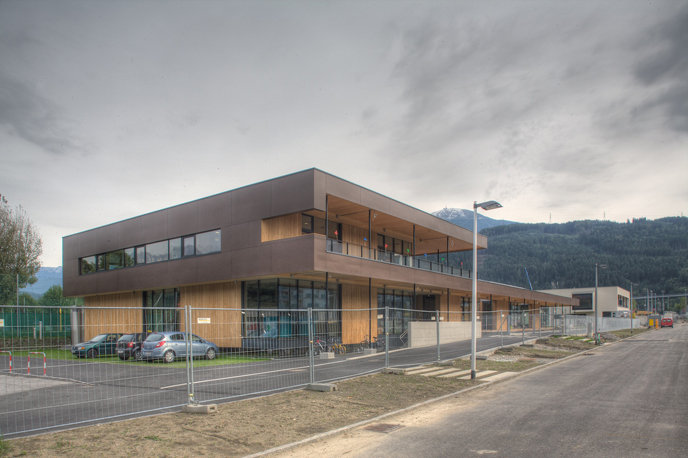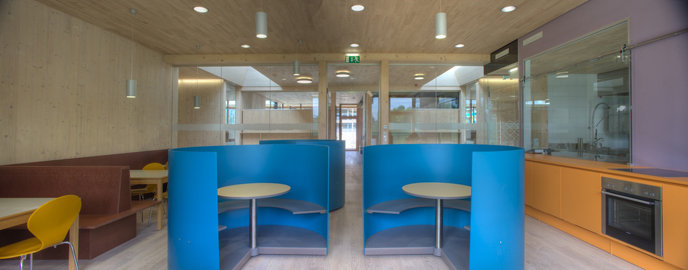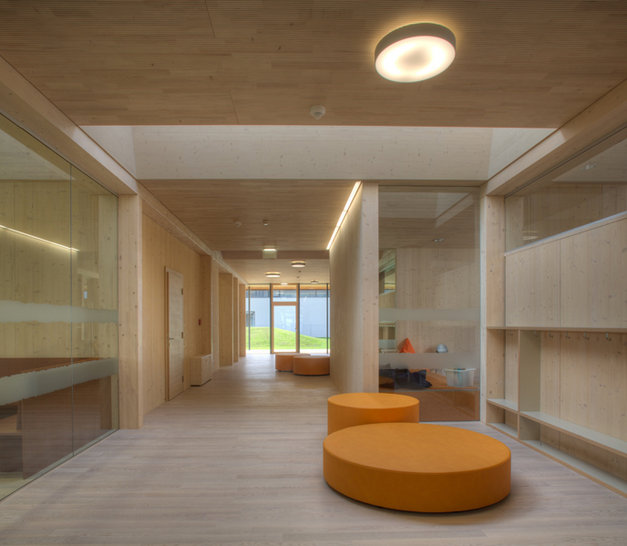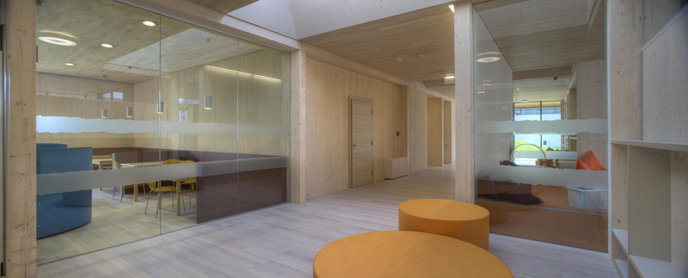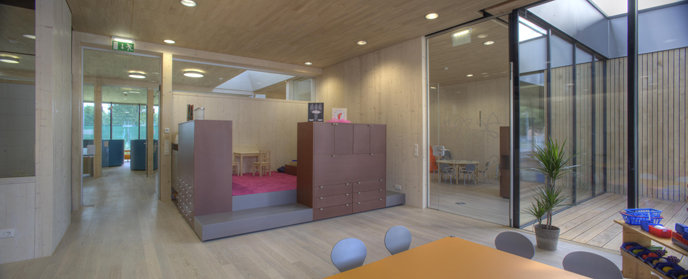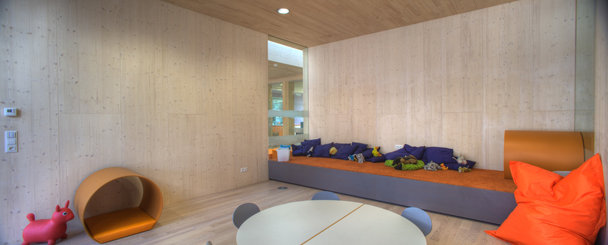The southern structure, erected with massive laminated timber, incorporates the kindergarten and facilities for small children day care in the basement. At the northern end of the building a raised upper level floor features an after-school care club. A wide middle corridor connects the ground level group activity rooms and serves, equipped with seating options, as a wardrobe area. East of the corridor the shared facilities like the exercise room and the children's restaurant are located. All group rooms are west-oriented towards a long patio that is protected by the projecting roof above. Smaller units are fit in between the group rooms, reaching out into the corridor. This arrangement additionally illuminates the corridor and forms small, protected atria on the patio. Major parts of the building front are constructed in glass, the group rooms can visually interact with the public park and the opposing retirement home, designed by noldin & noldin architects. Life inside the "Haus der Kinder" can visually connect to the life inside of the senior's residence.
At a relatively late stage in the design process, the decision to continue in passive housing standards was made. This prompted significant alterations, especially concerning the optimization of the building shell (glass-ratio) and the detailing. One major objective of the architects was to falsify the common prejudice that construction in passive house standards automatically result in bunker-like buildings with embrasure-sized windows. Offering the kids and young adults an open, sunlight flooded and ecologically exemplary lebensraum while adhering to low-energy standards is a worthy goal.
(translated, original in German language by Claudia Wedekind, based on a text by the architects)




